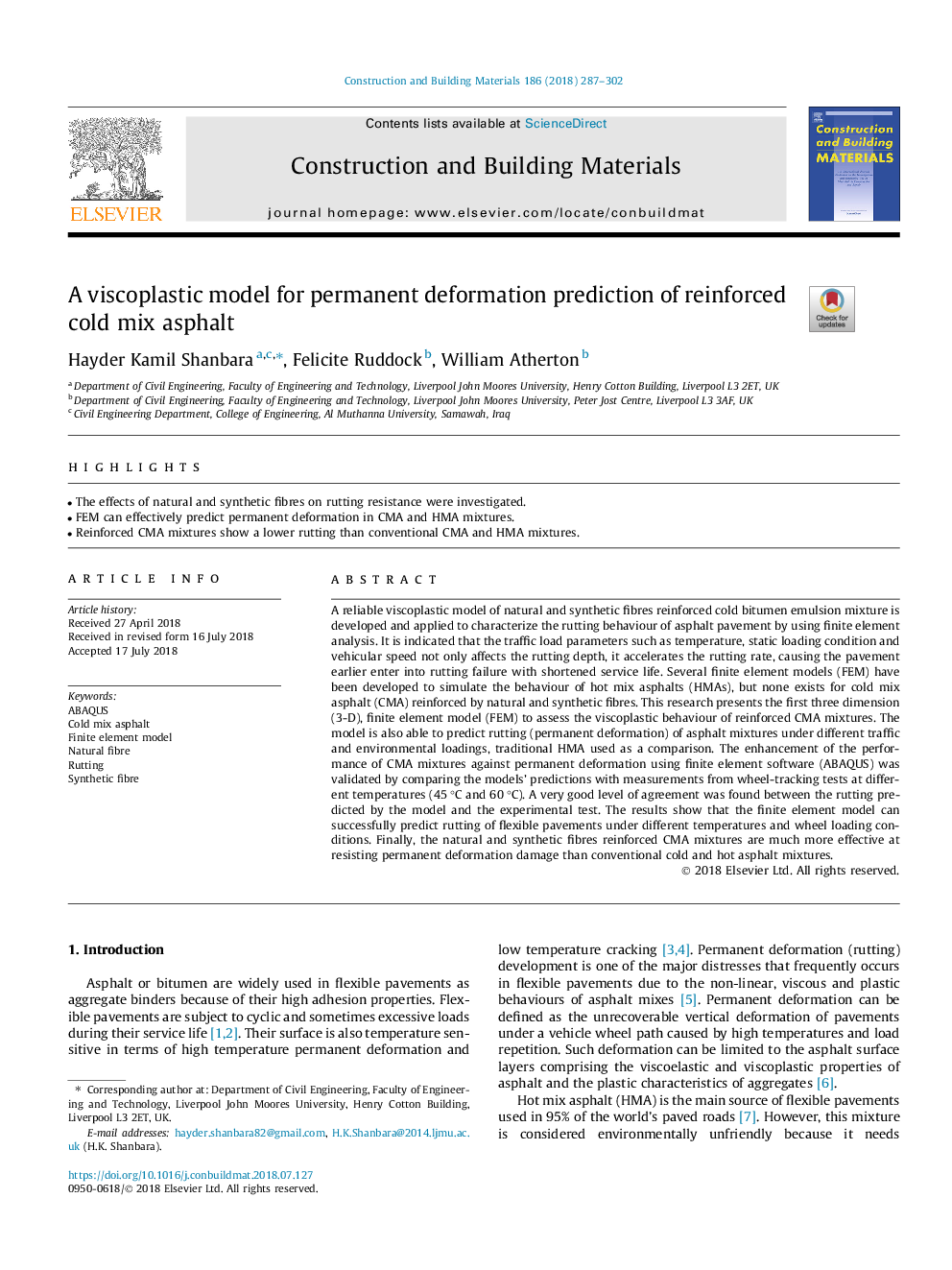| Article ID | Journal | Published Year | Pages | File Type |
|---|---|---|---|---|
| 6711629 | Construction and Building Materials | 2018 | 16 Pages |
Abstract
A reliable viscoplastic model of natural and synthetic fibres reinforced cold bitumen emulsion mixture is developed and applied to characterize the rutting behaviour of asphalt pavement by using finite element analysis. It is indicated that the traffic load parameters such as temperature, static loading condition and vehicular speed not only affects the rutting depth, it accelerates the rutting rate, causing the pavement earlier enter into rutting failure with shortened service life. Several finite element models (FEM) have been developed to simulate the behaviour of hot mix asphalts (HMAs), but none exists for cold mix asphalt (CMA) reinforced by natural and synthetic fibres. This research presents the first three dimension (3-D), finite element model (FEM) to assess the viscoplastic behaviour of reinforced CMA mixtures. The model is also able to predict rutting (permanent deformation) of asphalt mixtures under different traffic and environmental loadings, traditional HMA used as a comparison. The enhancement of the performance of CMA mixtures against permanent deformation using finite element software (ABAQUS) was validated by comparing the models' predictions with measurements from wheel-tracking tests at different temperatures (45â¯Â°C and 60â¯Â°C). A very good level of agreement was found between the rutting predicted by the model and the experimental test. The results show that the finite element model can successfully predict rutting of flexible pavements under different temperatures and wheel loading conditions. Finally, the natural and synthetic fibres reinforced CMA mixtures are much more effective at resisting permanent deformation damage than conventional cold and hot asphalt mixtures.
Related Topics
Physical Sciences and Engineering
Engineering
Civil and Structural Engineering
Authors
Hayder Kamil Shanbara, Felicite Ruddock, William Atherton,
